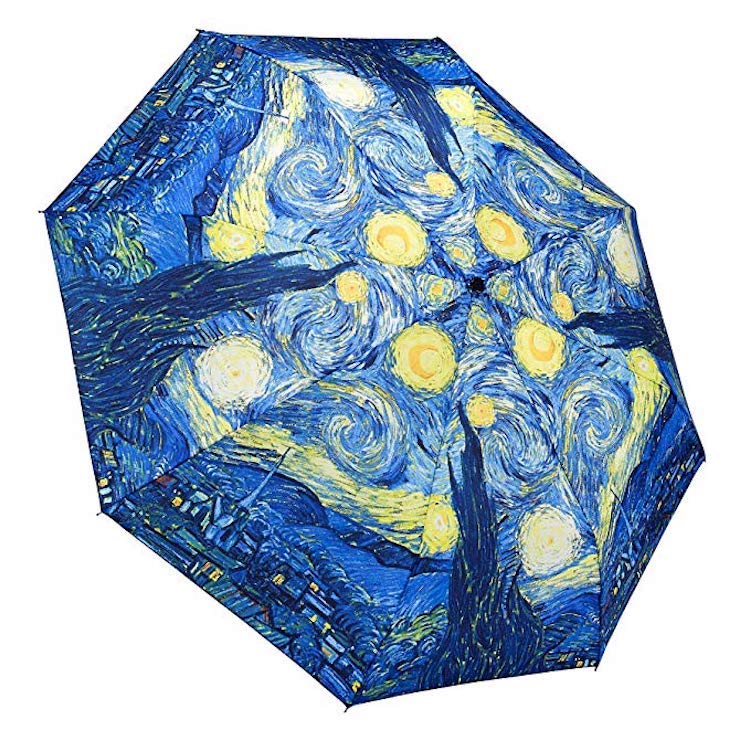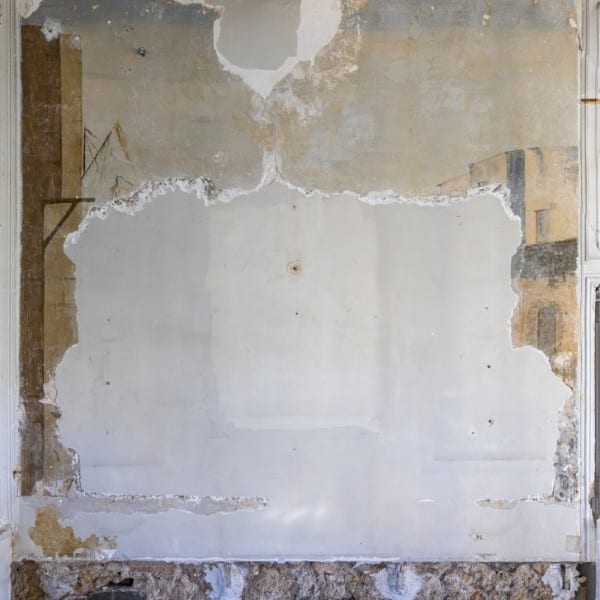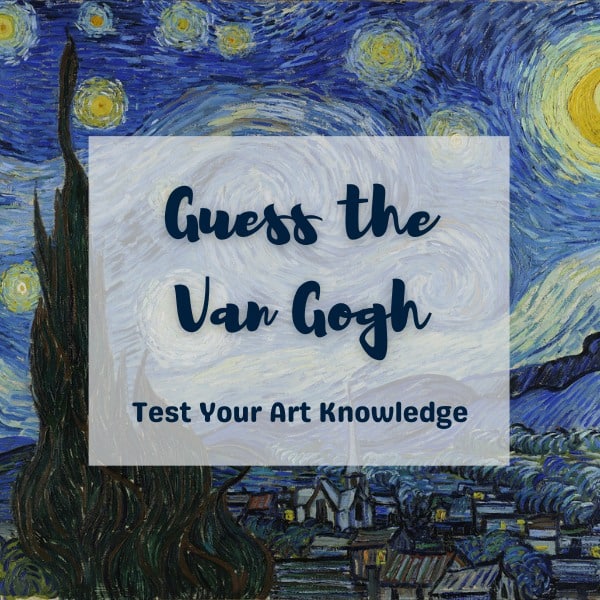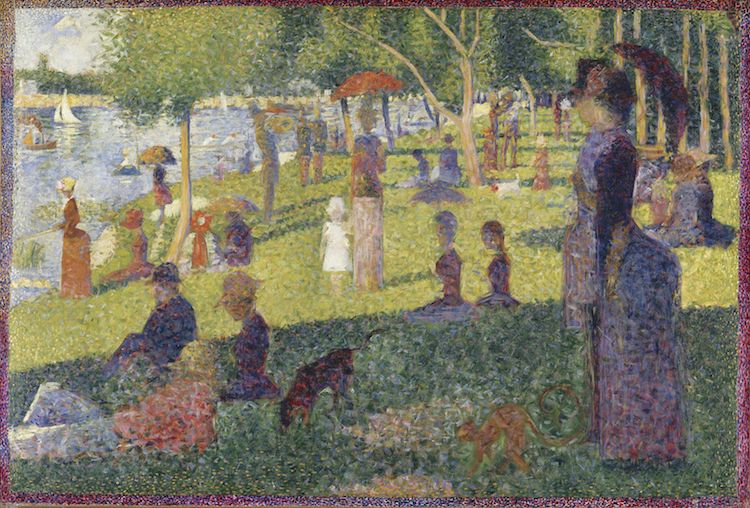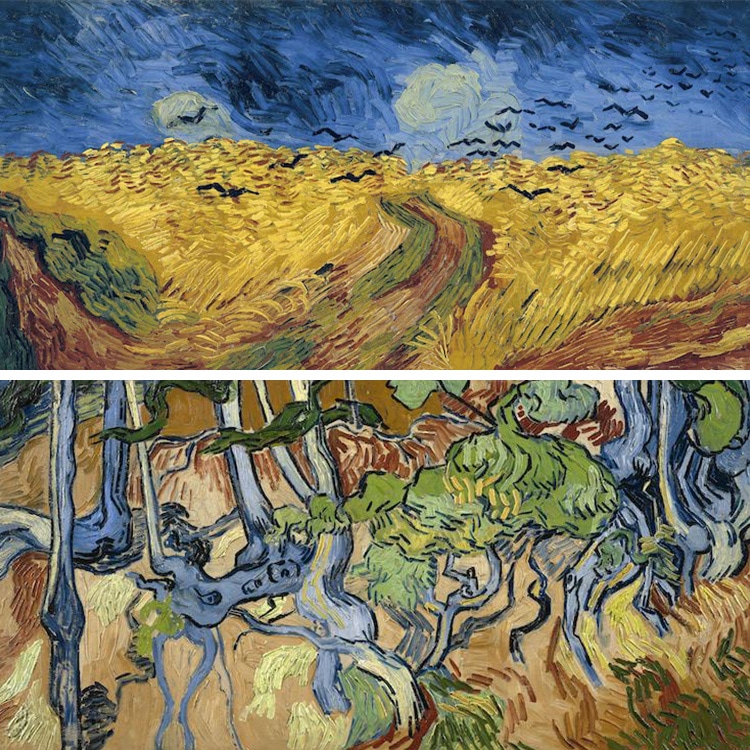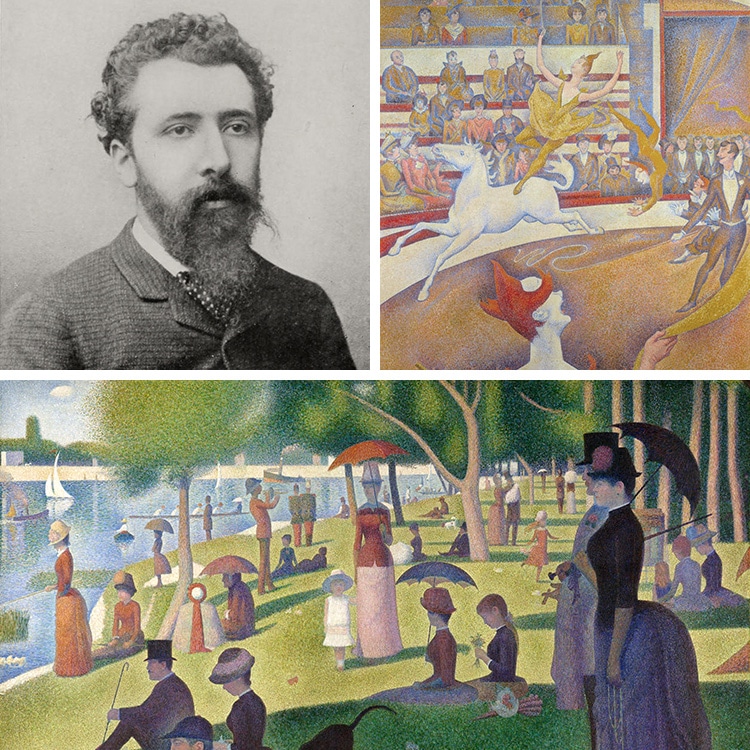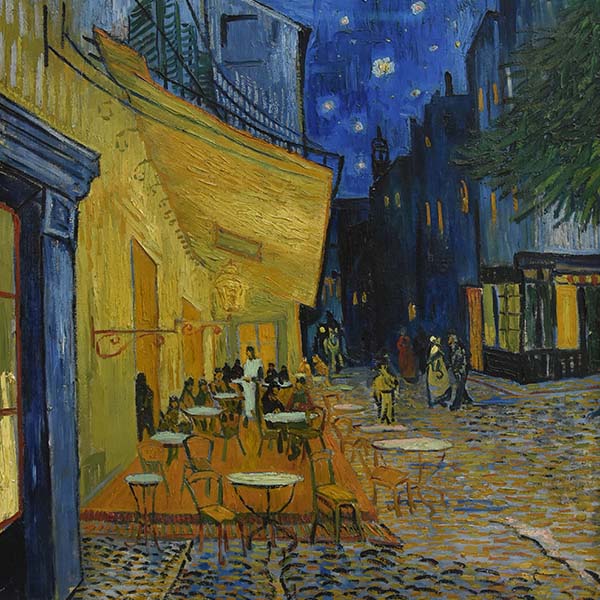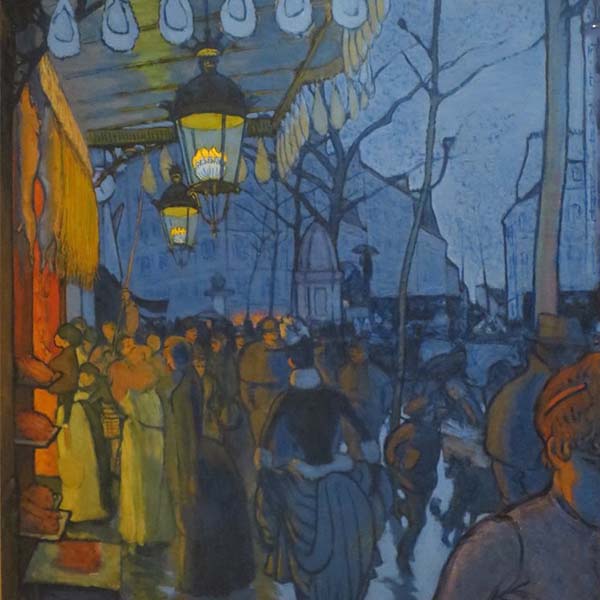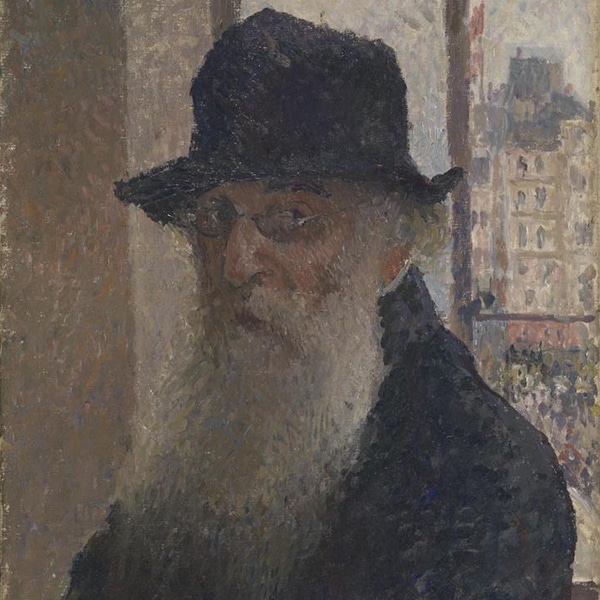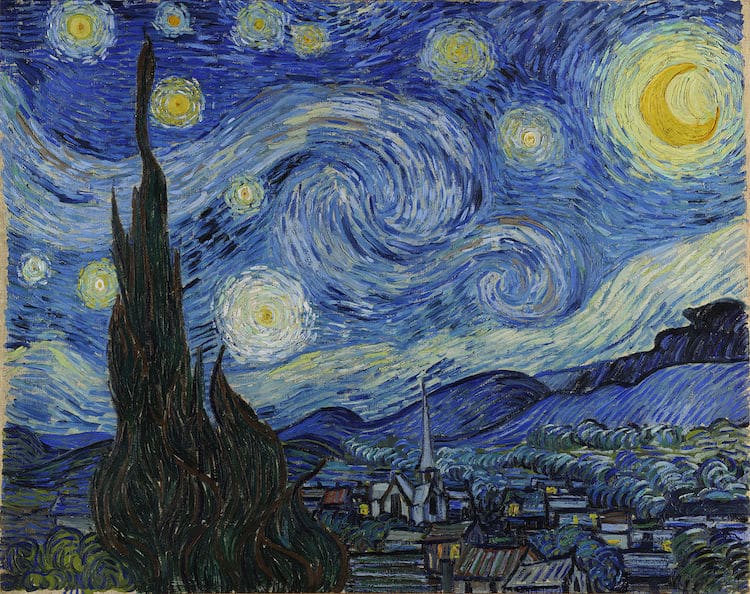
Vincent van Gogh, “The Starry Night,” 1889 (Photo: Public domain via Wikimedia Commons )
This post may contain affiliate links. If you make a purchase, My Modern Met may earn an affiliate commission. Please read our disclosure for more info.
With a well-known and universally adored body of work, Vincent van Gogh is arguably one of the most iconic artists of all time. As a pioneering Post-Impressionist figure, Van Gogh paved the way for other avant-garde artists and played a key role in the evolution of modern art. Among his many world-famous paintings, The Starry Night (1889), a piece produced late in the artist's exceptionally short career, has a particularly important place in art history.
With swirling brushstrokes, Van Gogh created a revolutionary oil painting of the night sky. Pops of vibrant yellow stars pierce through the deep blue sky, which is shown blanketing a village. The village itself is important because it alludes to where this troubled genius was located when he painted the masterpiece. The painter's well-known mental health issues have a large role in his creative output and The Starry Night is no different. In fact, the village is based on the view from his window in a mental asylum in Southern France.
To understand the profound impact of The Starry Night, one must explore the context, content, and influence of this magical masterpiece that has an estimated worth of over $107 million.
Pictorial Analysis of Starry Night
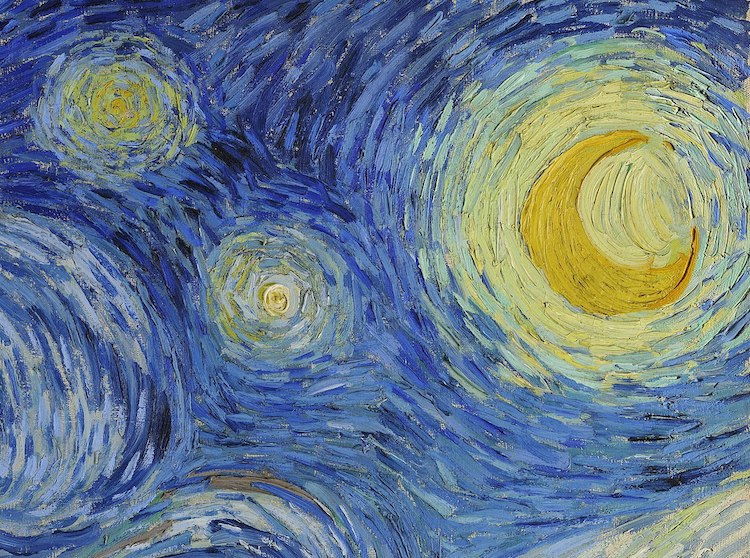
Detail of sky. (Photo: Public domain via Wikimedia Commons )
Van Gogh, Composition, and Color
Rendered in the artist's characteristic, Post-Impressionist style, The Starry Night features short, painterly brushstrokes, an artificial color palette, and a focus on luminescence. This artistic approach is particularly evident in the sky, which is composed of a thickly applied tonal collection of blue and gold hues. It's this treatment that helps to explain why it became so famous.
The ethereal painting's balanced composition is composed of celestial swirls, stylized stars, a radiating moon, an idyllic village, and a sky-high cypress tree. While the depiction is based on his real-life view of the village, Van Gogh took some liberties when painting it—a notable fact, as the Dutch artist was known for faithfully painting what he saw before him.
The sky of The Starry Night is the most dream-like element of the composition. There, Van Gogh seems to convey turbulent emotion, particularly in the curves and swirls that move across the canvas. The hamlet, including the prominent church spire (which is thought to be inspired by the architecture of his home in the Netherlands) is also entirely imagined.
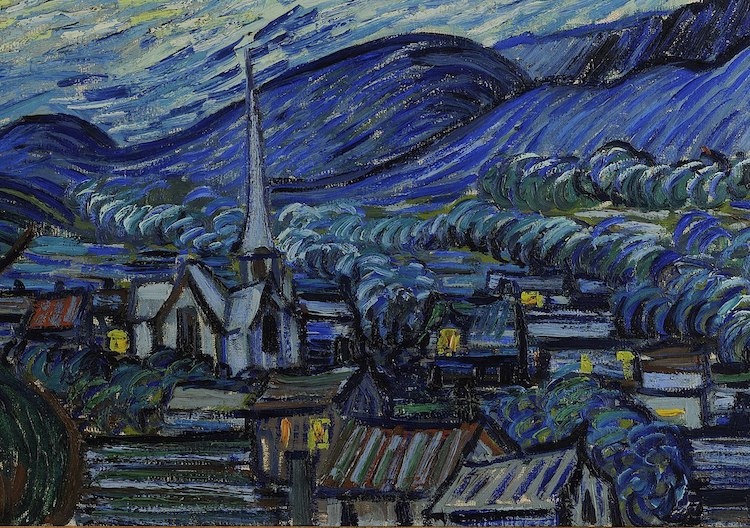
Detail of village. (Photo: (Photo: Public domain via Wikimedia Commons )
Additionally, as Van Gogh painted this piece from his room in the asylum, he opted to remove the prison-like bars from his window, illustrating his idealized approach to the painting and, perhaps, his longing to be free
What is the Meaning of The Starry Night?
According to the letters he wrote to his beloved brother Theo, Van Gogh largely regarded The Starry Night as a “failure”—alluding in particular to the imagined portions of it, which were such a departure from his usual way of painting.
Even so, the painting is often seen as having great emotional depth. For example, unlike many of the paintings Van Gogh was producing at the time, the color palette of The Starry Night is significantly darker, even recalling some of his first pictorial attempts. Art historians commonly attribute this to his depressive state. Yet, despite the nighttime blues, Van Gogh includes bright yellow-white stars and a crescent moon in his night sky.
Although at this point Van Gogh had largely given up his religious beliefs, he carried a deep love for the natural world, wherein he found solace. “Hope is in the stars,” the artist wrote to his brother. For this reason, The Starry Night painting is often interpreted as having a hopeful message.
What Caused Van Gogh to Enter the Asylum?
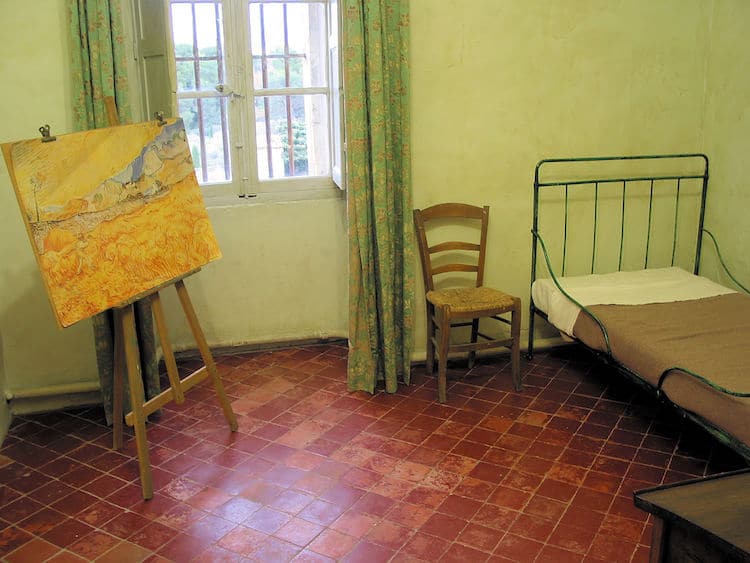
Van Gogh's room at Saint-Paul-de-Mausole (Photo: Original uploader (WT-fr) Saint Rémy de Provence Tourisme at French Wikivoyage, CC BY-SA 3.0)
On top of his revolutionary oeuvre, Van Gogh is known for his profound struggles with mental illness. Born in 1853, the artist was only 37 years old when he died of a possibly self-inflicted gunshot wound. This occurred just a few months after he left the Saint-Paul-de-Mausole mental asylum in Saint-Rémy-de-Provence. This is the asylum that he voluntarily checked himself into in May 1889 and where he painted The Starry Night.
How did Van Gogh end up in the asylum? To understand, we must turn back the clock to 1888. At the time, Van Gogh was living in Arles and had invited Paul Gauguin to say with him. Van Gogh greatly admired Gauguin—whose work was also collected by his brother Theo—and with whom he hoped to start an artist collective. Gauguin arrived on October 23 and the two pushed each other creatively. However, Gauguin would later say that their relationship was quite complicated. After two months of living together in The Yellow House, things came to a head.
Though it's not quite clear what occurred, Van Gogh went back to his room after a fight with Gauguin on December 23. This is where he severed his ear, wrapped it in a bandage, and delivered it to a woman at a brothel that the artists frequented. The following day, a police officer found him passed out, after far too much time had passed to attach his ear.
While at the hospital, he was diagnosed with “acute mania with generalized delirium.” Theo came to visit him at the hospital, but Gauguin stayed away. Though Van Gogh asked repeatedly to see him, Gauguin—afraid that a visit would push him over the edge—left Arles for Paris and never saw him again. After several months of repeated mental health episodes that saw him in and out of hospitals, Van Gogh left Arles for good and checked himself into Saint-Paul-de-Mausole.
Van Gogh's First Starry Night
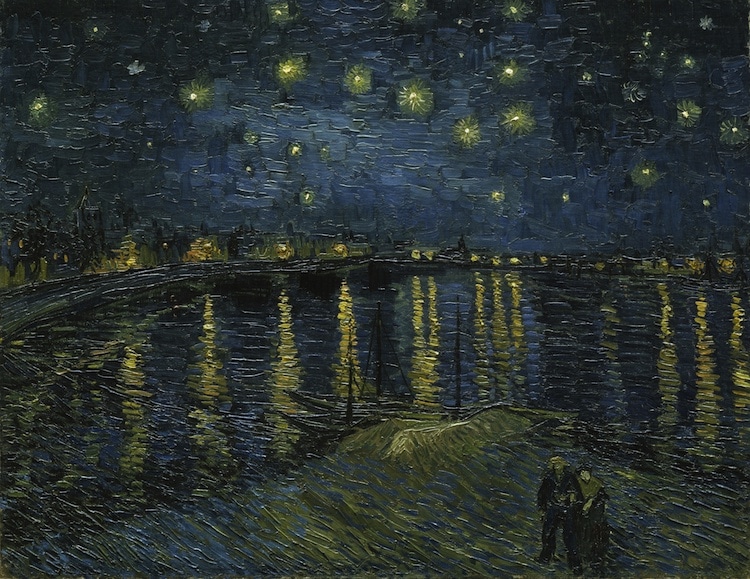
Vincent van Gogh “Starry Night Over the Rhone,” 1888 (Photo: Wikimedia Commons, Public domain)
During his time at the asylum, Van Gogh not only had a private room but was also given a small studio on the ground floor. Though he was permitted to sketch in his room, he was only allowed to paint in his studio. While committed, he completed an unprecedented amount of artwork. Eventually, the 150 pieces produced during this time would be compiled into the Saint-Paul Asylum, Saint-Rémy series, which includes important canvases like his Self-Portrait with a Bandaged Ear, The Irises, Wheat Field with Crows (his last painting), and Starry Night Over the Rhône—a piece that undoubtedly inspired The Starry Night.
Van Gogh painted Starry Night Over the Rhône in 1888—just one year before he completed The Starry Night. During this time, he was living in Arles, an idyllic French commune. Though rendered in vibrant brushstrokes and expressive color, the scene is calm; “two colorful figurines of lovers in the foreground” are the only people present in the painting, and the star-filled sky evokes a feeling of serenity.
Both Starry Night Over the Rhône and The Starry Night feature similar subject matter and are rendered in Van Gogh's signature style. However, they drastically differ in context. Starry Night Over the Rhône was painted near Van Gogh's charming home in Arles; the sweeping view featured in The Starry Night was captured from his window in the asylum.
While committed, Van Gogh painted this panorama on several occasions. The Starry Night, however, is the only nocturnal study of the view. Thus, in addition to descriptions evident in the myriad of letters he wrote to his brother, Theo, it offers a rare nighttime glimpse into what the artist saw while in isolation. “Through the iron-barred window I can make out a square of wheat in an enclosure,” he wrote in May of 1889, “above which in the morning I see the sun rise in its glory.”
Frequently Asked Questions
Who painted The Starry Night?
The Starry Night was painted by Post-Impressionist artist Vincent van Gogh.
When was The Starry Night painted?
Van Gogh painted The Starry Night in 1889.
Where is The Starry Night located?
Since 1941, The Starry Night has been located at the Museum of Modern Art in New York City.
How much is The Starry Night worth?
This priceless masterpiece is valued at over $109 million.
Books About The Starry Night
Want to expand your knowledge about Vincent van Gogh and The Starry Night? Check out some of these books. (Making a purchase via Bookshop helps support independent bookstores.)
The Starry Night continues to resurface in new ways in the modern world.
With each passing year, it seems as though The Starry Night is reaching more and more fans and inspiring new generations of artists. Today, the renowned work of art is a must-have visual for art lovers, whether that's in the form of a beautiful wall hanging, an inspiring decal, or a quirky toy.
Van Gogh Action Figure
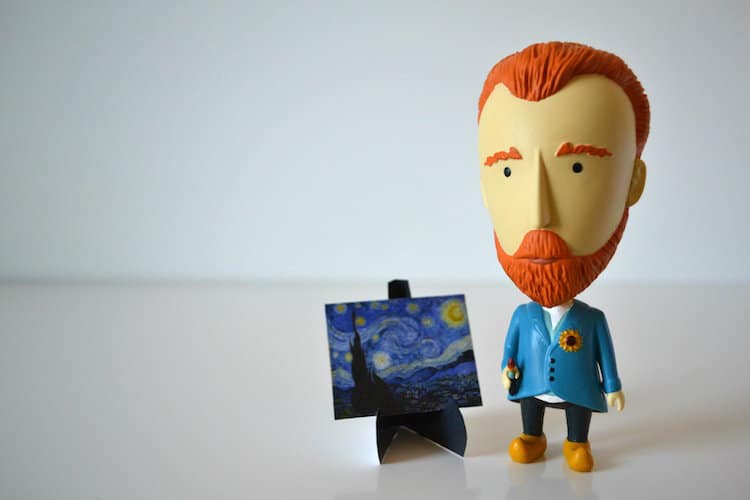
Today is Art Day | $29.99
Decorative Decal

YMIX | $7.59
Charming Mug
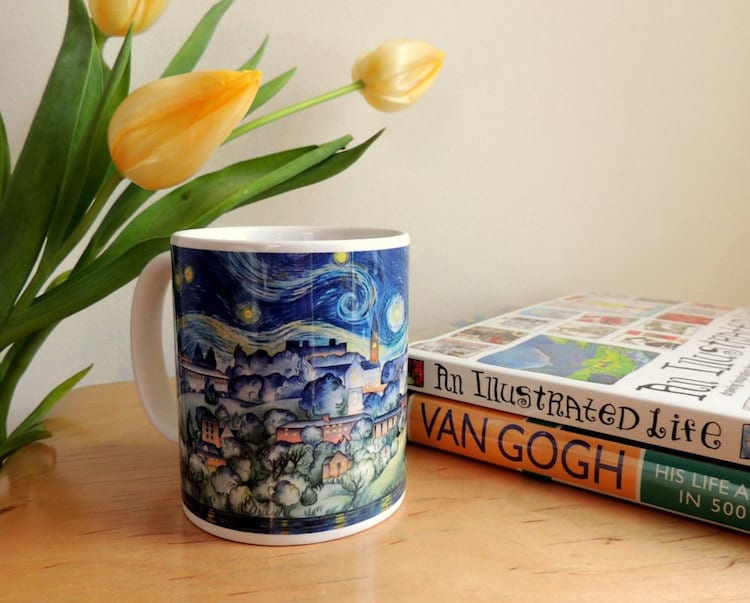
CherylChalmersArt | $20
Artsy Pillow
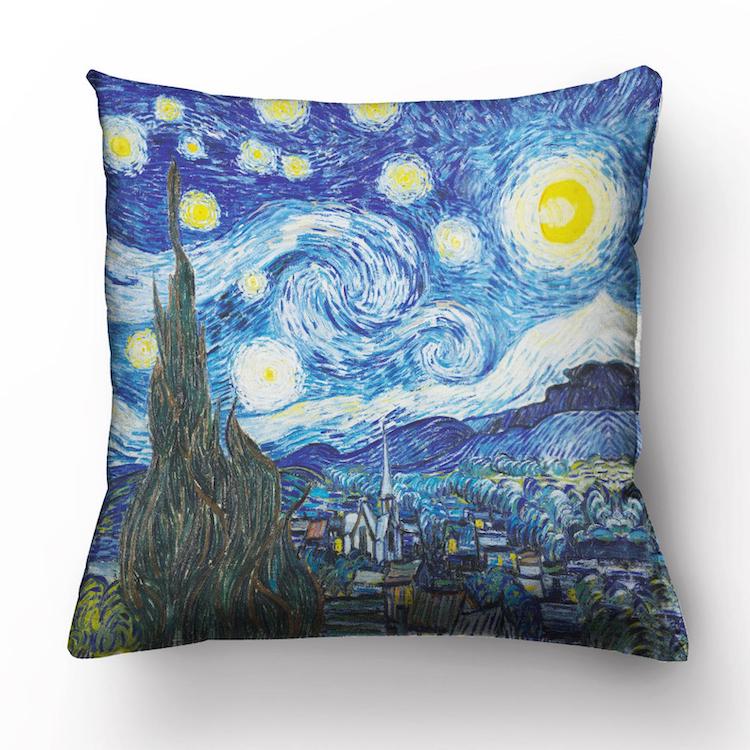
LinenIsLove | $22.78
Eye-Catching Candle
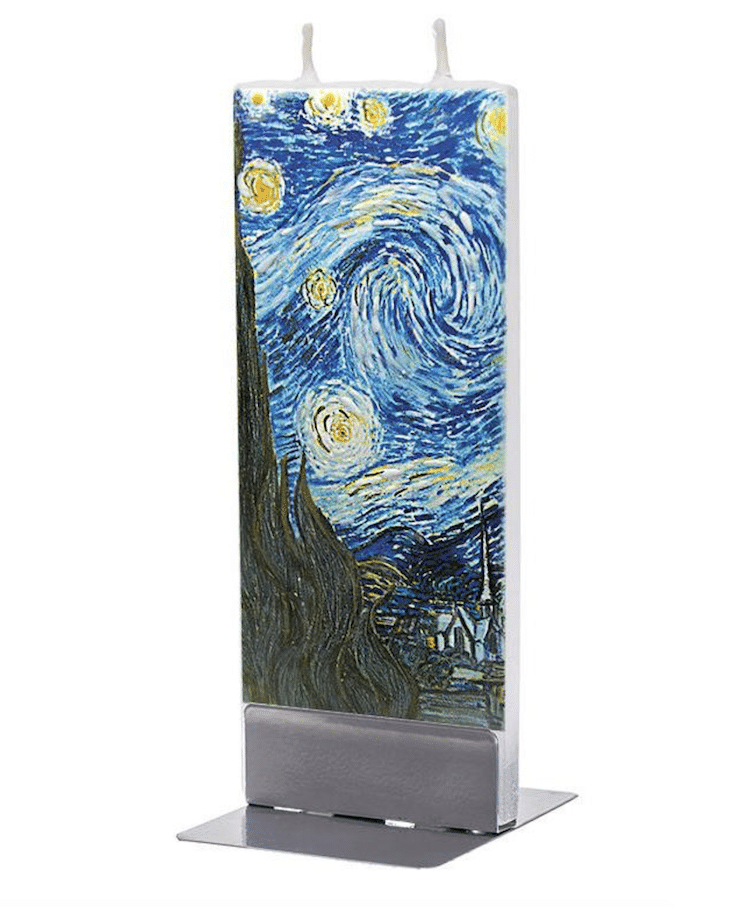
Flatyz | $17.95
Unique Wall Hanging
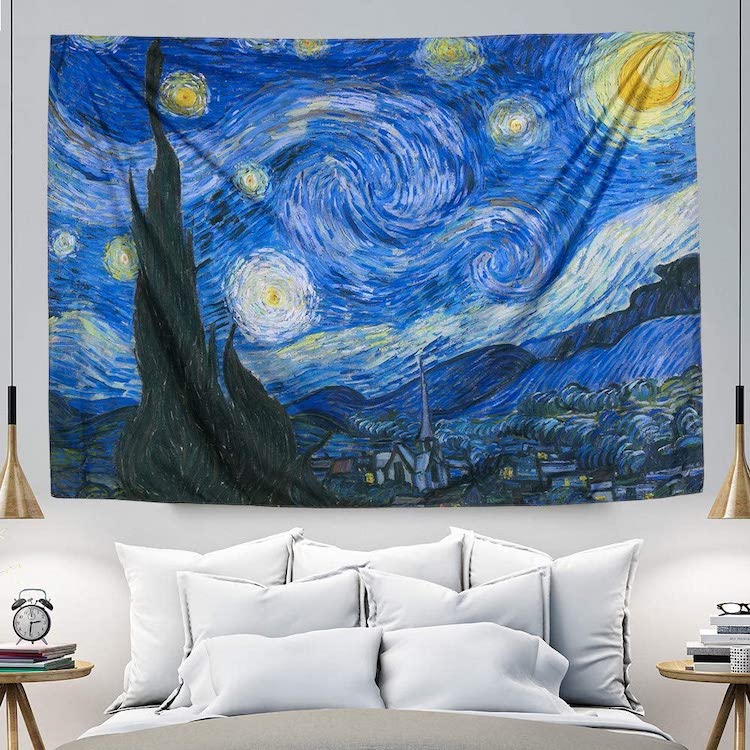
IcosaMro | $14.99
Museum Collection Puzzle

Clementoni | $23.90
Luminous Umbrella
Ultimately, given its fascinating context, poignant history, and original aesthetic, it's no wonder that The Starry Night has had such a transcendent impact on the world of art and, equally, on the world as a whole.
This article has been edited and updated.
Related Articles:
Handmade Candles Capture the Enchanting Glow of Van Gogh’s Famous Paintings
Beautiful Van Gogh Notecards Let You Channel the Artist’s Love of Letter-Writing
This Exhibit Gives Visitors the Experience of Stepping Inside Van Gogh’s Paintings
